ULTRA SOUNDS
The use of ultrasonic waves in order to reduce painful symptoms and the inflammatory process, to cause a relaxing effect on the tissues and to free adhesions and fibroses.
ULTRA-SONS + ELECTROSTIMULATION
Use of several types of electrical current, together with ultrasonic waves, to obtain an additional effect (analgesia, relaxation, hyperemia).
ELECTRIC STIMULATION
Use of different types of electric current. Therapeutic effects: analgesia, relaxation, anti-inflammatory action or stimulation.
ALTERNATIVE PRESSURES
Use of an alternating pressure device to optimize circulation and promote lymphatic or venous drainage in the upper and lower limbs.
IONIZATION
Use of the polarity of the galvanic current to introduce, locally, specific substances in the body (mainly analgesics and anti-inflammatories).
MICROWAVE
Deep heat form, which promotes a decrease in the pain symptomatology and the inflammatory process, decreases joint stiffness, decreases deep muscle spasm and induces tissue relaxation.
SHORT WAVE
Deep heat form, which promotes a decrease in the pain symptomatology and the inflammatory process, decreases joint stiffness, decreases deep muscle spasm and induces tissue relaxation.
MAGNETOTHERAPY
Therapy based on the influence of static pulsating magnetic fields on the human body, having effects such as: reduction of pain and inflammation, benefits in healing and repair of fractures and improvement of vascularization (central irrigation and peripheral tissues).
LASER
Application of non-ionizing electromagnetic radiation, to obtain effects of analgesia, reduction of the inflammatory process, stimulation of the circulation and cicatricial repair.
CRIOTHERAPY
Local or segmental application of the cold, with therapeutic objectives: analgesic and anti-inflammatory effects, or even stimulants.
CONTRAST BATH
A technique that consists in alternating between heat and cold, in which the objectives are vasomotor, that is, circulatory changes that the cold and the heat promote in the tissues.
HUMID HEAT
Superficial heat, applied in several body regions, with the purpose of obtaining a decrease of the painful symptomatology and muscle relaxation.
PARAFFIN
Superficial heat, usually applied to the extremities (hands and feet), in order to obtain a decrease in painful symptoms, increase in tissue flexibility and drainage
of edema (accumulated fluid).
PARAFANGO
Dry superficial heat, applied in several body regions, with the purpose of obtaining a decrease of the painful symptomatology and muscle relaxation. Very indicated in chronic pathologies. Composed of the mixture of a volcanic mud with paraffin.
MANUAL MASSAGE
Application of therapeutic massage techniques in a particular area / body region. Duration of the treatment – 10 minutes / anatomical area.
GLOBAL MASSAGE RELAXATION
Application of massage techniques in the spine and upper and lower limbs. Duration of the treatment – 50 minutes
RESPIRATORY KINESIOTHERAPY
Session of specific exercises, carried out with the accompaniment of the physiotherapist, in view of the recovery of cardio-respiratory problems (ex: bronchitis, asthma, pneumonia, cardiac surgery, among others).
BRONCHIC POSTURAL DRAINAGE
A set of techniques used to facilitate the drainage of secretions in respiratory problems (bronchitis, asthma, pneumonia, emphysema, among others).
MUSCLE STRENGTHENING
Use of specific equipment and / or techniques to strengthen muscles or muscle groups.
INDIVIDUAL MOTOR REEDUCATION
Set of rehabilitation exercises, performed with the accompaniment of the physiotherapist. Indicated for the treatment of important sequelae, usually neurological: strokes, vertebral-medullary trauma (paraplegia, tetraplegia), Parkinson, among others.
SPECIFIC TECHNIQUES OF KINESIOTHERAPY
Specific techniques, performed by physiotherapists, aiming the functional recovery of the user (example: mobilization and stretching, proprioceptive training, therapeutic exercise).
PASSIVE ARTICULAR MOBILIZATION
Application of mobilization techniques in certain joints, to maintain / increase articular amplitudes and decrease of painful symptomatology.
MECHANICAL REEDUCATION
Reeducation and training of specific movements, with the aid of adequate equipment.
TRAINING IN ACTIVITY
Training activities and tasks of daily life (ex: dressing, undressing, shoes) and functional activities (ex: walking, climbing / descending stairs, getting up / sitting), with the accompaniment of the physiotherapist.
MANIPULATION
Application of manual techniques to treat neuromusculoskeletal dysfunctions (problems in the nerves, muscles and joints), usually with the main purpose of restoring normal movement.









@termassps
Follow Us
@termassps
Instagram